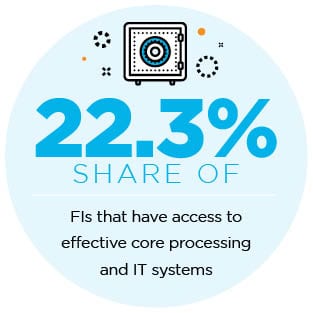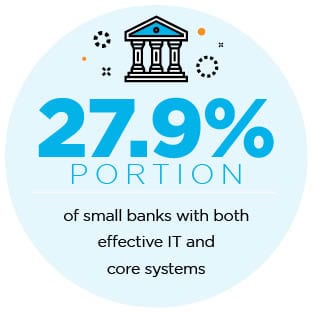REPORT: Why 78 Pct Of FIs Say They Struggle To Innovate
 Banks today recognize that they must embrace innovation to survive in a world being rapidly transformed by digital technology. Successfully delivering the new features and functionality that customers and clients demand takes more than just slick-looking websites and mobile apps, however. These digital products must run reliably, securely and fast — and this requires a solid technological foundation.
Banks today recognize that they must embrace innovation to survive in a world being rapidly transformed by digital technology. Successfully delivering the new features and functionality that customers and clients demand takes more than just slick-looking websites and mobile apps, however. These digital products must run reliably, securely and fast — and this requires a solid technological foundation.

Unfortunately, not many financial institutions (FIs) have confidence in these underlying systems. In fact, just 22 percent of FIs believe they have access to both effective core payment processing and IT infrastructure, the two systems that form the backbone and nervous system of bank payment systems.
For the past year, PYMNTS has been examining how banks are faring on the road to technological innovation. In our latest Innovation Readiness Playbook: Building The Technological Foundation For Innovation edition, a PYMNTS and i2c collaboration, we surveyed more than 200 bank executives to reveal the role core processing and IT infrastructure play in innovation performance and strategy.
To conduct our analysis, we divided our sample into four groups:
• Core/IT-enabled: FIs that believe they are able to leverage both these systems effectively to support innovation
• Core-enabled: FIs that consider only their core systems to be effective
• IT-enabled: FIs that consider only their IT infrastructures to be effective
• Core/IT-deficient: FIs that feel neither system is effective.
Our research establishes that effective IT and core systems are at the heart of successful innovation. Nearly half of top-performing FIs (46.7 percent) are core/IT-enabled, while only 12.5 percent of bottom-performing FIs are.
What’s more, core/IT-enabled banks pursue a broader range of innovations, including the most sophisticated technologies, than do those lacking one or both of systems. Core/IT-enabled banks make up the greatest share of FIs innovating 13 of 19 features, including real-time and contactless payments and digital wallets. More broadly, core/IT-enabled banks lead in innovating in the crucial area of payment technology. Our research shows that 62.8 percent of these banks are focusing on this area, nearly three times the proportion of IT-enabled banks.
 One might assume that being equipped with effective core processing and IT infrastructure is unique to large banks, or those with the resources to invest in the complex and costly systems. A more complicated picture emerges from our research: While banks with assets over $25 billion are disproportionately represented among core/IT-enabled FIs, this group also includes a significant share of small banks. In fact, 27.9 percent of core/IT-enabled banks have less than $500 million assets, surpassing the portion with between $500 million and $25 billion in assets.
One might assume that being equipped with effective core processing and IT infrastructure is unique to large banks, or those with the resources to invest in the complex and costly systems. A more complicated picture emerges from our research: While banks with assets over $25 billion are disproportionately represented among core/IT-enabled FIs, this group also includes a significant share of small banks. In fact, 27.9 percent of core/IT-enabled banks have less than $500 million assets, surpassing the portion with between $500 million and $25 billion in assets.
It could be that smaller banks are more agile in pursuing FinTech innovations like cloud-based payment platforms, whereas larger banks are more likely to be weighed down by decades-old legacy processors. This reinforces one of the over-arching findings in our research: Innovation in banking today is less about size or in-house resources, and more about having the drive, vision and infrastructure to succeed.
To learn more about how FIs are overcoming technical barriers to innovation, download the report.



